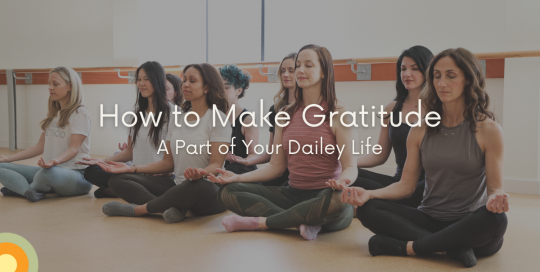
Gratitude has no shortage of benefits. It decreases stress and other negative emotions, helps calm nerves, improves social relationships, physical health, and so much more.
But what exactly is gratitude?
Is it something anyone can practice?
Does it actually need to become a daily part of life?
Dr. Snehal Kumar, a licensed psychologist, explains gratitude as “the practice of making space for appreciation.” I love this explanation because it highlights how, at its core, gratitude is intentional, meaning it’s something anyone can practice. Essentially, it’s the active choice we make, in any given circumstance, to fill our mental space with positivity over negativity.
But do we actually need to practice that regularly? Does it really make a difference if I choose to focus on how warm and comforting the coffee cup feels on my hands vs. my irritation over burning my tongue?
The short answer is yes!
Experts say it’s the accumulation of practicing gratitude in the “tiny moments” throughout our day that produces those amazing benefits listed above. Of course, I often think of it in terms of barre workouts! Similar to how a turned out squat builds gluteal and quadricep strength incrementally over time, daily gratitude exercises build mental strength. With intentional repetition, each little down and inch up an inch (or thoughtful moment of gratitude) gets us stronger!
I know for me, living each day incorporating gratitude, makes me a happier, healthier person. Here are some of my favorite methods I try to use to strengthen my gratitude muscle
- Thank yourself: every morning, show yourself some appreciation! Genuine gratitude and self-appreciation go hand-in-hand, so start the day by choosing to acknowledge all of the beautiful people that surround you, the amazing things you have accomplished, are working towards or plan to do in the future.
- Gratitude journal: gratitude journals are an incredibly beneficial habit; not only does putting pen to paper give you a running list of thankfulness, but it allows creative expression and provides clarity for the tougher times in life. Physically writing out gratitude is so therapeutic, it’s a practice I try to incorporate each evening before I go to bed and allows me to go to sleep with an open heart.
- Exercise: physical movement is possibly one of the easiest ways to change a negative mindset; I fully believe in the power of endorphins and moving your body to get out of a bad mood and help clear out lingering ungratefulness.
- Extend a specific thank-you: sharing a “thank-you” with a friend, partner, or family member is beneficial always, but consider sharing a specific thank-you: “thank-you for taking time away from your day to make and bring me soup while I was sick, so I didn’t have to cook” is powerful for both parties. Take some time to reflect. Think of someone you can extend a specific thank-you to, acknowledging their action, effort, and the benefit you received. I imagine a little thought will make it simple to acknowledge how much love and support you have in life- and help you appreciate even the littlest ways you receive.
- Get outside: there’s something about basking in the beauty of Mother Nature that makes it nearly impossible to remain in a negative headspace. Even better is being able to pair exercise with the great outdoors by going for a walk or bringing your laptop outside during Dailey Online! While you do it, look around. Notice the beauty around you, the leaves, the flowers, the birds, even the amazing rain that nurtures our planet.
- Three things: say (out loud) three things you’re thankful for. This is also an awesome bonding activity for families! As you eat dinner with your family or friends or put your kids to bed, take a moment to connect and have them list off three things they are thankful for. Then, list off three things you’re thankful for. It’s a wonderful way to help establish the positivity of gratitude with others while also building your own practice.

